Mementos: Celebrating Refik Anadol's Unsupervised at MoMA
An exclusive interview with Valérie Whitacre, Trilitech Head of Art, Madeleine Pierpont of MoMA, and Sean Moss-Pultz of Bitmark about the immersive machine-learning based "Unsupervised" by Refik Anadol.
2,100 words, 11 minute read
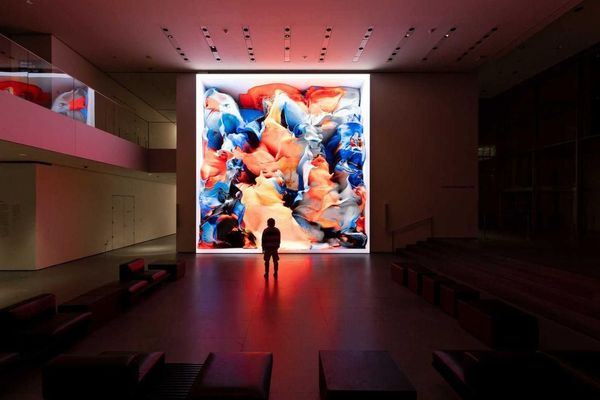
Installation view of Refik Anadol: Unsupervised, The Museum of Modern Art, New York, November 19, 2022 - October 29, 2023. © 2023 The Museum of Modern Art. Photo: Robert Gerhardt.
Interview hosted by: Valérie Whitacre, Head of Art at Trilitech
In November of 2022, MoMA’s Gund Lobby welcomed Unsupervised by Refik Anadol, an immersive installation built on a sophisticated machine-learning model. The installation interprets MoMA’s publicly available collection data and reimagines the history of Modern Art while incorporating site-specific input from the environment lobby. Changes in light, movement, acoustics, and the weather outside affect the continuously shifting imagery and sound. In MoMA’s first ever onsite blockchain activation, the museum worked with Bitmark and their digital art wallet, Autonomy, to provide visitors with digital mementos of their experience.
Mementos of visitor experiences were minted on the Tezos blockchain throughout the course of the installation from autumn 2022 until autumn 2023.
In conversation with Madeleine Pierpont of MoMA and Sean Moss-Pultz of Bitmark, Valérie Whitacre, Head of Art at Trilitech, the London hub of the Tezos ecosystem, reflects on the success of the installation and memento project.
Valérie Whitacre: MoMA is widely recognised as one of the world’s leading Contemporary Art Institutions with one of the most prestigious collections. But Digital Art has been somewhat rejected across global leaders - when did MoMA start to integrate digital art into its programme and collection?
Madeleine Pierpont: I don’t think digital art as a whole has been rejected by global leaders, but one could argue it has certainly been a bit of a dark horse in the art market. With the growing use of blockchain and the increased visibility of NFTs, it is interesting to consider the term “digital art” because it carries different meanings in different contexts. If we are defining digital art here as art that is created or displayed using digital technologies, the museum has been engaging with digital art for quite some time.
One of my favorite examples of programming at the museum is MoMA’s 1969 SPACES exhibition, which asked artists to create art experiences by redefining and designing spaces in the museum. One such project was an interactive work in MoMA’s Sculpture Garden by art group Pulsa. Utilizing digital technologies like motion sensors and computers, they created an interactive light and sound installation.
MoMA’s experimentation with web3 is supportive of the museum’s mission broadly to “be a catalyst for experimentation, learning, and creativity, a gathering place for all, and a home for artists and their ideas.” Quoting former museum director Alfred Barr who said “the Museum of Modern Art is a laboratory. In its experiments the public is invited to participate,” we hope to continue experimenting, learning and engaging with the public around blockchain technology.
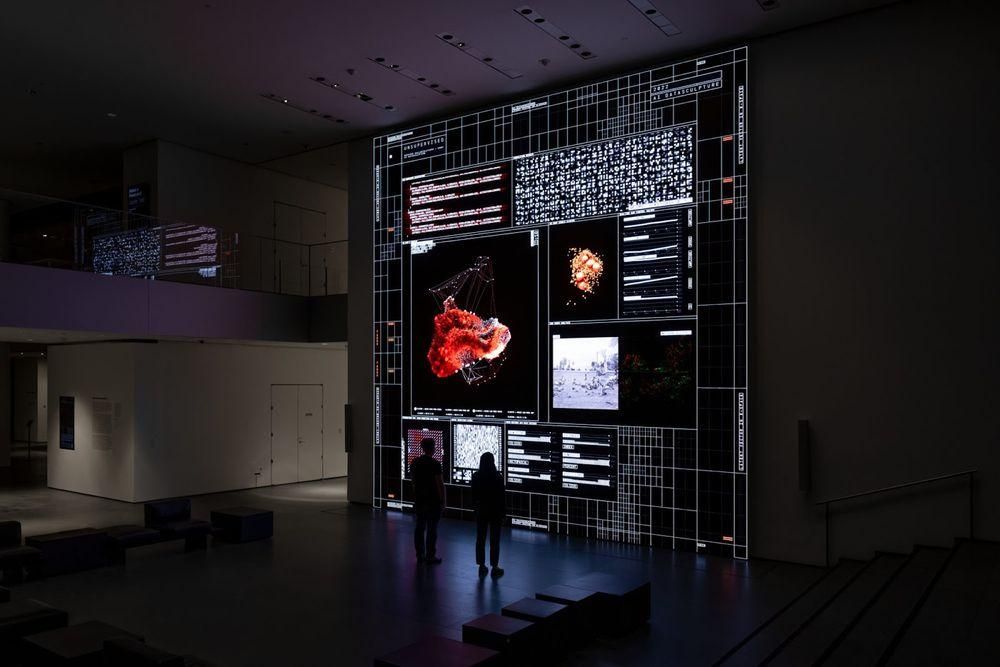
Installation view of Refik Anadol: Unsupervised, The Museum of Modern Art, New York, November 19, 2022 - October 29, 2023. © 2023 The Museum of Modern Art. Photo: Robert Gerhardt.
VW: When NFTs took the art world by storm in 2021, businesses and art institutions alike had vastly different reactions and expectations of where blockchain technology would lead the market at large. MoMA is still one of the very few institutions exploring integration of the technology - can you tell us more about the museum’s journey to this point?
MP: Happily! MoMA’s first major project in the web3 space was with the exhibition and sale of Unsupervised — Machine Hallucinations — MoMA by Refik Anadol on Feral File. In this set of works, Refik trained his AI model on the museum’s publicly available collection data.
Since then, the museum has continued to explore web3 more broadly. We are still in a stage of experimentation and learning. The Memento series came about as one such exploration.
With the Memento series, we were eager to understand how our visitors interacted with NFTs and how we might lessen barriers to entry. We gained a lot of valuable insight on how to best support the web3 community and engage more broadly with these technologies.
In the MoMA Postcard initiative, which is an experience in collective creativity on blockchain, we invite any and all to collaborate, learn and experiment with web3 technologies. We hope this can be a digital space for meaningful connection and dialogue.
VW: Refik Anadol is one of the leading names in digital art, immersive technology, and data-based visualization to date. Whilst not all of his work is minted on the blockchain, it’s clear that the discussion around blockchain has brought a wider audience to his oeuvre. Does Refik’s work hold a particular place in the MoMA and Feral File discovery of blockchain or of onboarding audiences?
Refik’s Unsupervised installation has been fantastic. The average time spent in front of a work of art is something like 30 seconds, but visitors sit in front of Unsupervised for long stretches of time. When the museum is open late for MoMA Uniqlo NYC Nights, salsa dancing breaks out in front of the screen and people even boo when the installation is turned off for museum closing time! I think for many it is their first engagement with digital art on such a large scale. Art is perhaps one of the most powerful conduits for connection. Witnessing young, old, digitally savvy, the not-so-digitally-keen and everyone in between gathered together around the installation…it is a pretty powerful feeling.
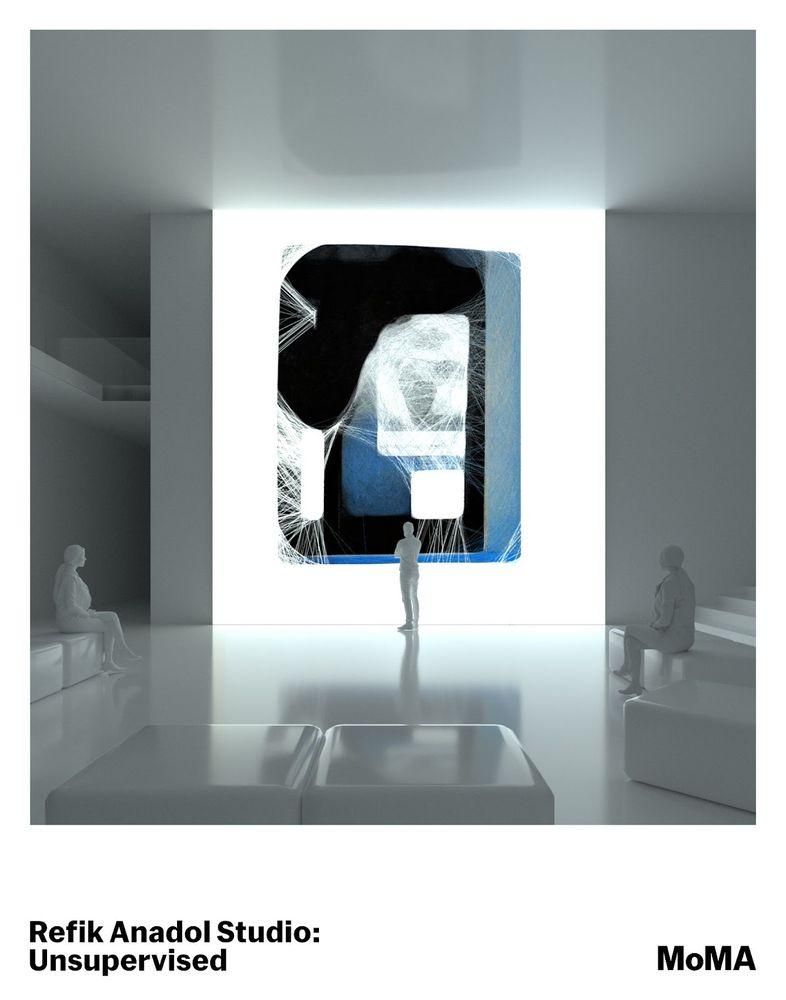
Still image of Memento 6, a NFT available to visitors of Refik Anadol: Unsupervised at The Museum of Modern Art, New York, November 19, 2022 - October 29, 2023. © 2023 The Museum of Modern Art and Refik Anadol.
VW: Autonomy is quickly becoming the leading wallet for art collectors for its interface, editorial content and more traditional user experience. Most wallets are designed to prioritize digital currencies rather than artworks - what makes Autonomy different both as a wallet as well as an ecosystem player working with institutions like Feral File, MoMA, and others?
Sean Moss-Pultz: Our work on Autonomy was started by questioning how people could and should enjoy digital art. The traditional art world has had thousands of years to answer questions around how art should be displayed, conserved, and contextualized. While digital art has been around since the mid-20th century, only recently has digital art become popular to collect among the general public. This brought questions around how such art could be protected, displayed in physical environments, and enjoyed on an everyday basis by ourselves and in social settings. Working on the world’s only digital art wallet, we talk with artists, collectors and institutions such as MoMA to solve their use cases and make these solutions available to all users.
VW: MoMA and Refik Anadol chose Autonomy for its first ever free mementos for visitors. And with very little promotion, over 20,000 collectors received their free memento after having experienced the Refik Anadol installation in the lobby between November 2022 and October 2023. The majority of these are likely new to blockchain technology - how do these numbers compare to expectations the museum and Autonomy had about onboarding completely new users?
MP: We didn’t necessarily have a benchmark we were looking to meet; rather, we endeavored to understand how to create the easiest web3 onboarding experience. Autonomy did this brilliantly with a process as simple as scanning a QR code and downloading the app. We have fine-tuned the activation, experimenting with different kinds of language and content, as well as adding a Web3 Glossary in the app to define fundamental terms. We’ve received positive feedback on the ease of the experience and the excitement of being able to take away a keepsake of the installation.
SMP: Our approach with this project focused on how we could make the experience of visiting Refik Anadol’s installation unforgettable. Thus, we focused on making the experience of claiming a memento frictionless and fun, something that might drive visitors to question, “when can I do something like this again?” and “what’s going on behind the scenes that made this so wonderful to engage with?”. Using the Tezos blockchain for the activation allowed us to offer the experience to MoMA visitors for free without technical compromises due to affordable transaction costs and low carbon footprint.
What 20,000 successful collectors meant to me, many of whom returned to MoMA to collect additional mementos as they were introduced in following months, was that we showed how web3 tools could grow audiences by naturally building upon existing brands and experiences rather than relying on buzzwords.
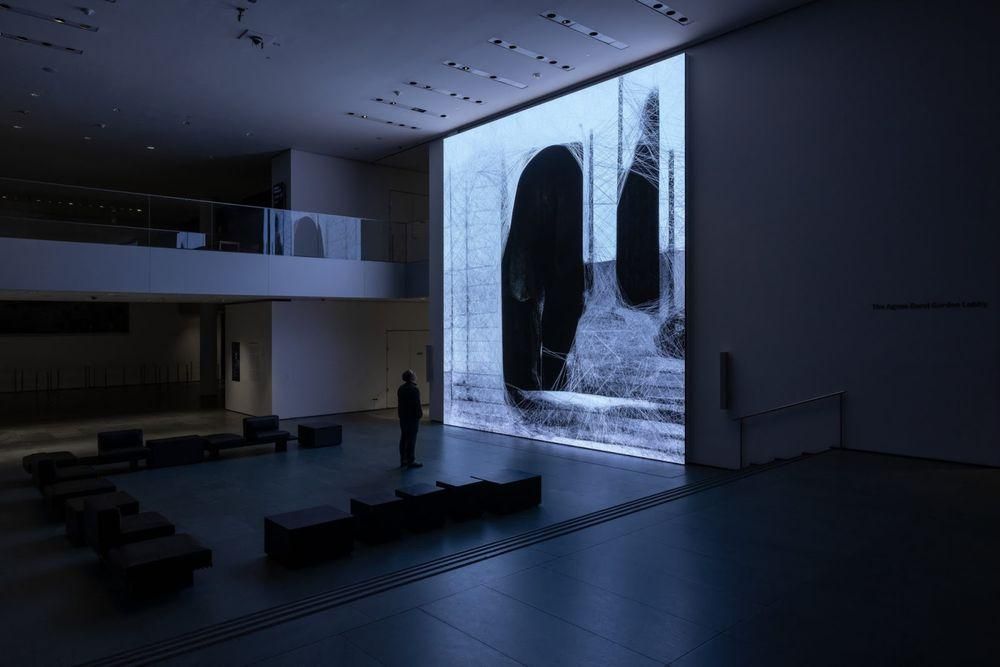
Installation view of Refik Anadol: Unsupervised, The Museum of Modern Art, New York, November 19, 2022 - October 29, 2023. © 2023 The Museum of Modern Art. Photo: Robert Gerhardt.
VW: What community initiatives and projects interest you both most at the moment? Do you see blockchain technology more as an infrastructure for museums and galleries? Or does the aesthetic value of the artwork being generated make the most impact for your audiences?
MP: There are compelling use cases for blockchain as an infrastructure layer in the “traditional” art market. Dynamic ticket NFTs, for example, are an exciting prospect. It will probably take some more time for large institutions to deploy blockchain solutions at the public-facing infrastructure level. Education and easy wallet onboarding can help move that needle. Separate from blockchain as an operational framework for institutions, the possibilities around the experience of art are extraordinary. It not only enables new modes of art creation, but also a new kind of community building and engagement around that art. It is thrilling to think about what the ecosystem might look like in five years time.
SMP: I am excited about account abstraction across multiple blockchains (such as having an Ethereum address interact with Tezos applications) and Autonomy is looking forward to leading these implementations. With the development of the ERC-4337 standard enabling smart contract wallets, Autonomy will be able to offer improved ease of use for much better security. Some other cases of what this standard enables are multi-party control of addresses (such as two partners sharing control of a wallet address), setting spending controls over an address (similar to non-web3 digital payment apps), and allowing platforms to run more web3 activities that won’t require crypto from new users. In this last example, we enable this via our activations for partners like MoMA through centralized Autonomy infrastructure. It was incredibly complex for us to pull this off; however, ERC-4337 will eventually allow us to delete half of that instructure and open up opportunities for those with less engineering capability.
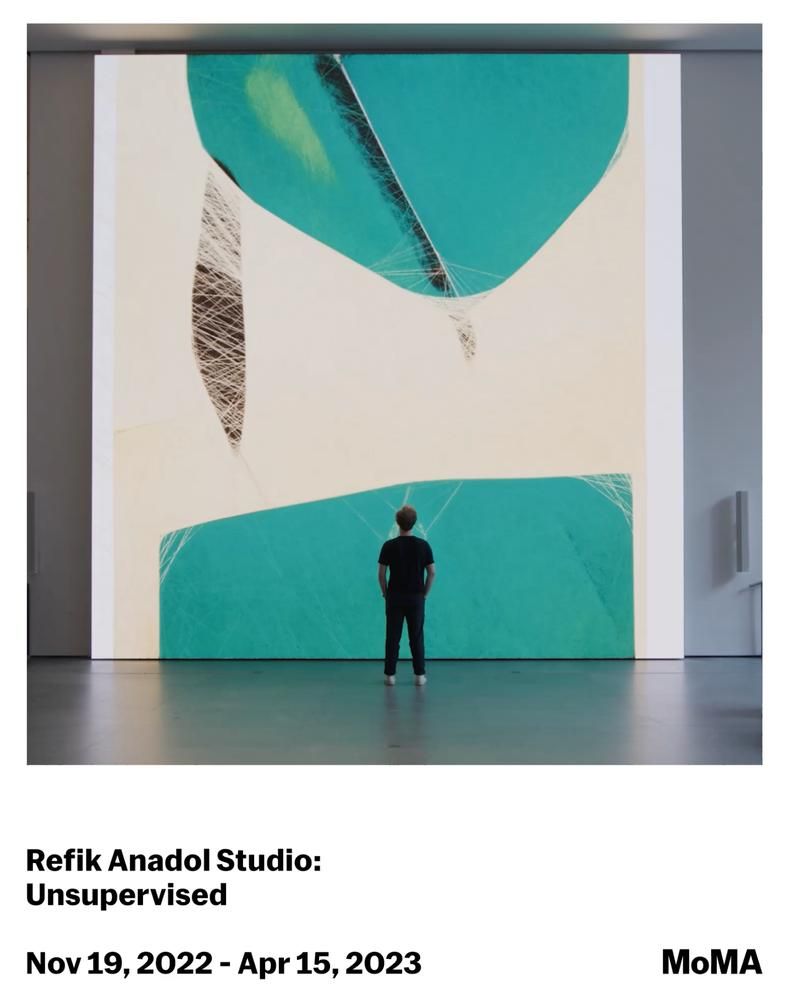
Still image of Memento 4, an NFT available to visitors of Refik Anadol: Unsupervised at The Museum of Modern Art, New York, November 19, 2022 - October 29, 2023. © 2023 The Museum of Modern Art and Refik Anadol.
VW: What are the biggest lessons you both learned working on this project? Do you have advice for institutions and platforms who are looking to explore blockchain for the development of their curatorial programmes or for audience engagement?
MP: For a large swath of the general public, the term “blockchain” is either too daunting to approach or too off-putting to investigate. And still there are many who may not even be aware of it. The Memento series has been useful in considering how to support mass adoption and what is required to do so. There is still much work to be done in that arena, but the Autonomy team has done an incredible job at creating the most intuitive and accessible platform for collecting, viewing and interacting with digital art. One area where I see a gap is in educational resources that are easily digestible. Our upcoming MoMA Postcard project endeavors to do that with an experience that is straightforward, accessible and fun.
SMP: Blockchain gives everyone a system that connects customers and transactions without the need for intermediaries. In the typical environment today, companies engage customers with the permission (and fees) of Facebook, Yelp, or LinkedIn. These platforms essentially gain control of those customers over time. With Autonomy, MoMA is able to foster a community with people who engage in its web3 activities. However, Autonomy isn’t able to take control, or even moderate access to that community as a typical web2 platform would - these customers have a direct connection between their blockchain addresses and MoMA. Everything is transparent to them and private to us. We (Bitmark) literally do not know any personal information about the customers that use Autonomy. MoMA and their customers are peers.